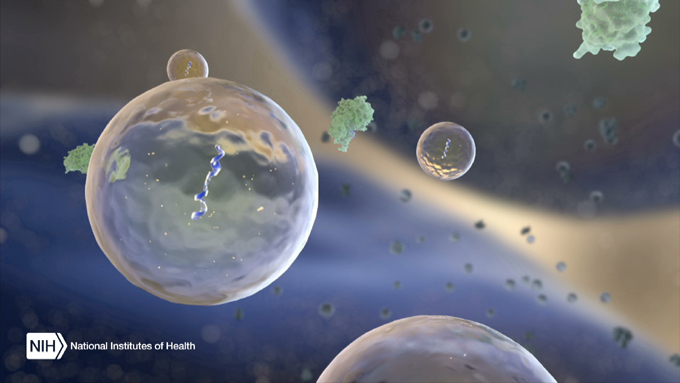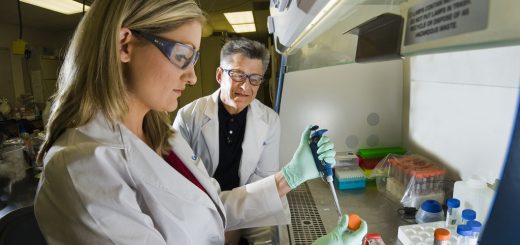Hacking Cell-to-Cell Communication

Your cells are sending messages to each other, and we can now read what they’re saying. For nano-sized particles, Extracellular Vesicles (EVs) have become a big deal with even bigger potential in the last two decades. Previously thought to be no more than garbage bags dumped from cells, EVs are now appreciated as important messengers for cell-to-cell communication.
Released by all cells in the body, EVs act as tiny couriers carrying messages from one cell to another. These messages are in the form of bioactive cargo — lipids, proteins, nucleic acids, and other biomolecules — protected within a lipid bilayer, keeping them safe from the turbulent environment outside the cell. Upon uptake by a recipient cell, EV cargo is ’read’ and subsequently influences the cell’s behaviour, making EVs key mediators in numerous biological processes[1]. By taking a peek inside EVs we can eavesdrop on the messages that cells are sending to each other, but what can reading these messages tell us?
Cells send different messages when they are diseased compared to when they are healthy; unhappy cells, much like unhappy humans, send unhappy messages. Scientists can isolate EVs from the blood, urine, cerebrospinal fluid, or saliva of individuals with a disease and ‘read’ the messages being sent under these conditions using an array of techniques. This has improved our understanding of EV-mediated disease mechanisms and unlocked the possibility of new disease biomarkers[2]. Exciting research is already exploring how EV cargo, size, and concentration could be used as non-invasive biomarkers, or “liquid biopsies”, in cancers, cardiovascular and neurodegenerative diseases, pregnancy disorders, and organ transplant rejection[3].
There is also growing interest in hacking these cellular messengers to be therapeutic delivery systems[4]. Researchers can now design EVs to transport specific therapeutic cargo — drugs and biomolecules — to diseased cells to modify their behaviour and treat disease. EVs seem ideal for this task due to their nano-size, low toxicity, and ability to securely transport cargo to distant cells. Notably, their ability to cross the blood-brain barrier, a formidable final obstacle for many new therapeutics targeting the brain, opens new possibilities for treating brain diseases including dementia, stroke, and Parkinson’s[5].
Despite remaining technical challenges and unanswered questions, ongoing clinical trials investigating EVs as biomarkers reflect the scientific community’s confidence in the future medical applications of hacking this cellular messaging system[6].
[1] https://youtu.be/WUsv0CaAUo8?si=c0AhvxielFXuDbly
[2] https://www.izon.com/news/considering-the-case-for-extracellular-vesicle-based-biomarkers
[3] https://www.nature.com/articles/s41392-020-00258-9
[4] https://www.ncbi.nlm.nih.gov/pmc/articles/PMC4698466/
[5] https://www.mdpi.com/2306-5354/10/1/51
[6] https://www.ncbi.nlm.nih.gov/pmc/articles/PMC9917082/
Edited by Despoina Allagioti
Copy-edited by Rachel Shannon







